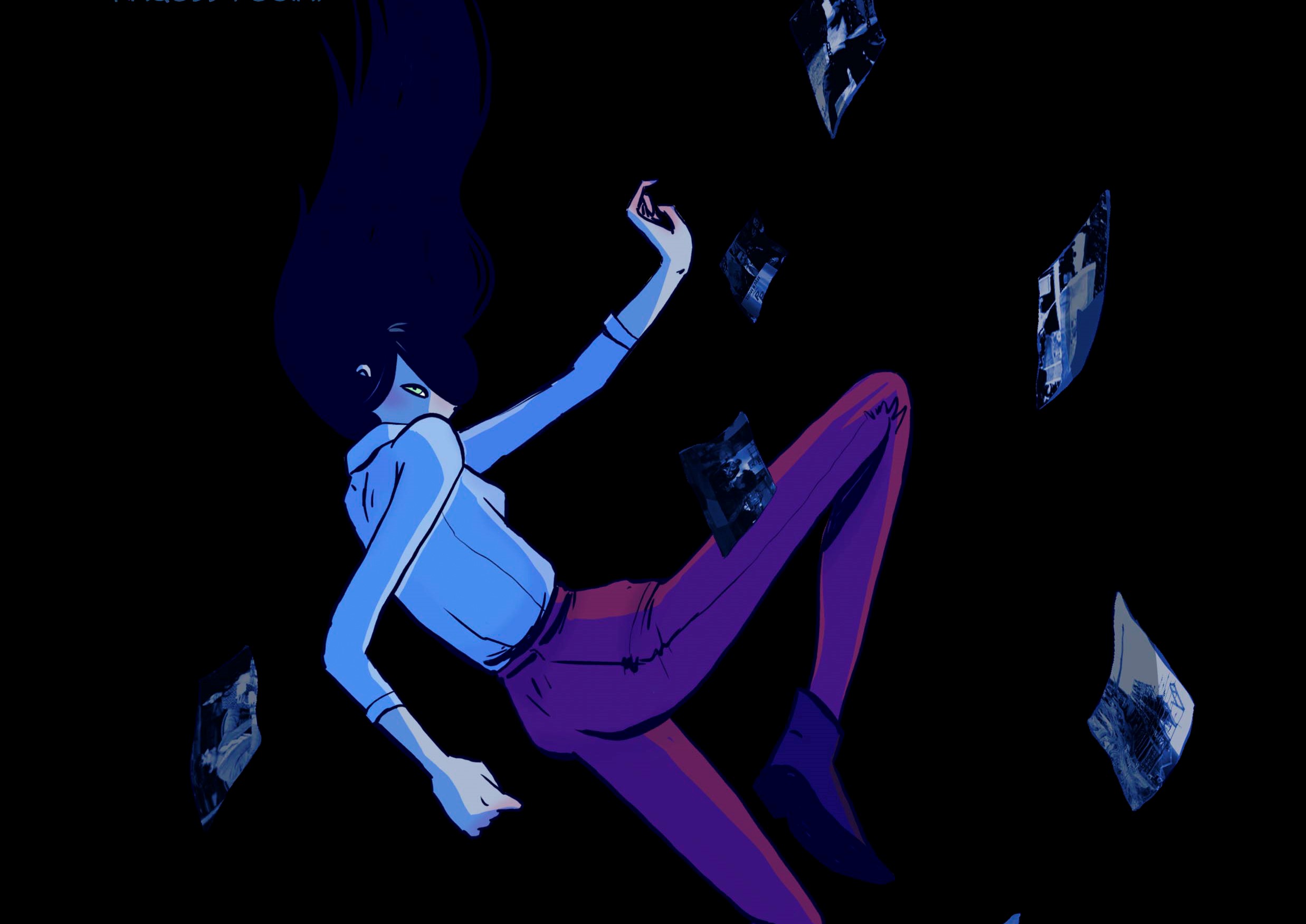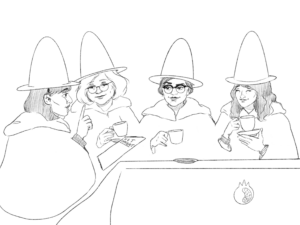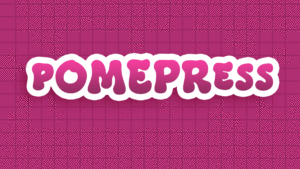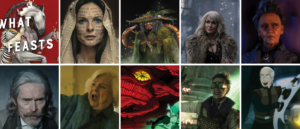With the boom of Kickstarter, Patreon, and the small press comics scene, it feels like there’s never been a better time for getting fresh comics directly from the creators. But even so, we at POME have long dreamed of a return of one of our favorite formats: the monthly comics magazine. Fortunately, Claire Napier of Women Write About Comics has answered the call with a new project, BUN&TEA!
BUN&TEA is a monthly magazine which will contain a single chapter of twelve different stories. While the stories are serialized, each chapter is designed to stand on its own, even as it forms part of a larger complete narrative arc. Complete with an adorable MC, Bunton Cuppasham, BUN&TEA carries on a long tradition of comics magazines hosting an exciting variety of creators. At the same time, it fills a niche in the English-language comics landscape that has felt too empty for too long.

Last December, we spoke with Kumail Rizvi, who is working on a thrilling heist comic, The Common Wealth, for BUN&TEA. This time around, we’re delighted to be speaking with writer Gary Moloney and artist Raquel Kusiak Burgos, two new talents who are working together for the first time. Their story for BUN&TEA, LENS, is a tale of politics and corruption, seen through the camera of its titular character: a photojournalist by day, and an assassin-for-hire by night. In the interview below, we chat about breaking into comics, the influences of other artists and writers when making comics, and more!
Ashley Gallagher: First things first: can you tell us a little bit about how you got into making comics generally, and about how you got involved with BUN&TEA specifically?
Gary Moloney: I’ve always loved storytelling and I have been doing it in some shape or form for as long as I can remember. Prose, poetry, plays; I tried my hand at them all over the years to varying degrees. Comics is a medium that has always been near and dear to me. Not only has it been the source of some of the characters and tales that have meant to most to me, but from a craft perspective there are some ways of conveying emotion, intent, and story that are unique to comics. For example, a single silent panel, properly used, can have more impact than a page of prose or moment in a film. So I was eager to explore telling a story through comics. Having little to no artistic talent, however, I thought that my hopes of being able to make comics would remain just that. Any scripts I wrote were just for me.
Then in about July of 2017, I attended a local Small Press Day event and started getting involved in the Irish scene. To say they were welcoming is an understatement. There’s something really special about our creative scene in Ireland. We all want to see each other succeed. There’s no sense of a hierarchy or cliques, whether you’re just after putting together your first self-published book, or you’re a pro working with some of the big companies. I really have to thank the entire Irish comics crew for embracing me as they did.
From there, the friends I made encouraged and challenged me to put my money where my mouth was and just make comics. So I set myself a goal of writing a self-contained short story every month and try to get it made. I teamed up with a few artists that I knew locally, as well as some I’d met online, and put together a few shorts. I’d post them on Twitter and after a while, I realized I had enough material to fill an anthology. This led to my self-publishing my first comic, Mixtape, with the help of a few mates. Funnily enough, we launched the book at the very same Small Press Day event that I had attended just a year earlier. It’s pretty mad when you think about it.
Regarding BUN&TEA specifically, I had been following Claire’s work over on Women Write About Comics for a while. The perspective she brings to the comics commentariat is a much needed breath of fresh air. I was procrastinating on Twitter one day, as you do, and saw her pitch the idea for this old school comics anthology magazine, like the kind that I used to buy from the corner shop as kid. She asked any interested parties to pitch her some ideas. I hadn’t done any long-form work up until this point, so I thought I was very much chancing my arm when I sent her the idea and outline for LENS. Surprisingly, Claire seemed really into the story and we started working out the logistics. It all happened quite fast, but it’s been an absolute pleasure. She’s as wonderful an editor as she is a journalist.
Raquel Kusiak Burgos: I have always written and drawn, and tried to direct film shorts, but recently discovered comics and my head exploded! Comics were the perfect mix of these interests!
Since then, I set myself a goal. I read, I drew, I studied.
This year I spoke with my favorite authors, with publishers, with comic book vendors… For example, I went to an event put on by Astiberri, a Spanish publisher. There I was able to get to know Emma Ríos. It motivated me a lot to see her speaking with sincerity and swear words. I’ve worked on many things, and it was the first time I saw a woman in the professional world representing me completely. But at the same time, it’s actually very difficult to make a living in comics, or publishing with Spanish publishers. I’ve spent very little time in comics, but it’s a realization that punches you in the face as a welcome.
Then I found the tweet from Claire Napier, saying she was looking for creators who are new, but very eager to work. I sent her my test pages, she liked them, and here we are.
AG: In your story, the main character works as both a photojournalist and a hitman contracted by the government. I’m curious to hear more about how the worlds of media, politics, and crime collide in this story: especially in a political climate where it feels like we hear a lot about government corruption, but don’t necessarily hear a lot about what to do about it.
GM: I am a big news and current affairs junkie. Politics is something that’s always on my mind in some form. So as much as I love escapist media, I absolutely adore stories that weave what’s going on in the world around us into their narrative. It’s something I try to do in my own work as much as possible.
Our main character, Jane Danner (codename: Lens) is someone who understands equally how to use media and force to achieve what she wants. As a photojournalist, she’s well-aware of the ability of one photograph to influence hearts and minds. She’s someone who was inspired by the imagery that emerged during the Vietnam War and the Tiananmen Square massacre. We’ve all seen those images and they are incredibly powerful to look at. Photography like that can and has changed the world. It reveals the true horror that humanity is capable of and hopefully, encourages us to do better to ensure that similar events don’t occur again. But, what if while simultaneously shocking you to your core, the violence they depicted seeped into your psyche? What if some part of you wanted to be both the one who captures it and brings it about? That’s Jane.
One of the interesting contradictions within Jane is that while she certainly believes in the power of photography and violence, she’s not too concerned about the implications of her work. For her, the satisfaction comes in bringing about a set of circumstances. She’s quite neutral on whether that is a positive or negative thing for the world. Jane doesn’t ask questions she may not want the answers to and that, as we all know, is the kind of behaviour that facilitates the worst kinds of corruption. It’s something that she’s going to have to grapple with in this arc as she meets other characters who challenge her unwillingness to look deeper, and as the reasons for her being sent on this story’s mission begin to emerge.

AG: There’s a strong history in comics of dealing with all of this stuff: hard-hitting journalism, crime, and politics! Are there any major sources of inspiration in any of these genres that you’re drawing from in this story? Are there any aspects of the story that you feel make a strong break from established tropes?
GM: One of my favorite writers in any medium is John le Carré, someone who excelled in writing smart, intelligent thrillers which were informed by the political concerns of the time. One of the things he does so well is delivering much of that insight through the most off-hand remarks. The Constant Gardener is a great example of expressing uncomfortable truths as a matter of fact.
This is also a common feature of the best crime comics, and it can lend a sense of surreality to the whole affair. It’s something you see in the work of Greg Rucka, Ed Brubaker, and Sean Phillips, where characters can know they about to die and be weirdly okay with it, or resigned to the odd rules which govern the underworld they occupy. There’s certainly a bit of that in LENS — or I hope there is, at least. It’s more pulpy than those guys. Of course, we don’t want to just be a “greatest hits” version of any of those storytellers either, so expect some swerves along the way. As to the exact ways in which we do that? Well, that would be telling, but I’ll say that Raquel and I really love messing with the juxtaposition that comics allow for.
RKB: In terms of art, there isn’t one specific influence. But I do draw inspiration from artists I admire: for example, I drew a page inspired by the stories of Gianni de Luca. Recently, I realized that the secret identity of Lens looks a little like Clara After Dark by Jordi Bernet. More subtly, there is a small detail panel of Emma Ríos, and a little character in the distance from Wes Craig.

AG: This is the first story you two have worked on together as a team. How does the experience compare with working on solo projects? Are there any interesting or surprising things that came up while collaborating? Any areas of strength in your collaborator that have come in handy while working on the story.
GM: Collaboration is part of the reason why I love comics so much. Each project I’ve been lucky to be a part of has been a learning experience. My collaborators have always been my greatest teachers. Raquel is no exception. She’s a really unique storyteller, and I feel incredibly lucky to be able to work with her on this comic. As a writer, I visualize the page as much as possible as I write. I do very, very rough layouts to get an idea of what it could look like, because I will never ask someone to do something without thinking mechanically about how it could work myself. I don’t share those layouts but I always make sure that each script starts with a disclaimer that basically tells the artist to go with what works for them. This leads to a great back-and-forth as we chat about how best to capture the intent behind each page.
What’s amazing about Raquel is that she nearly always comes back with something different that not only works, but is really exciting and experimental. Stuff I would never even dream of, owing perhaps to our different comic reading histories. Because our main character is a photojournalist and photography features heavily, we wanted to be able to reflect that in the way the story is presented on the page. Raquel figures out methods of incorporating and replicating camera work in LENS that really proves why this had to be a comic, and wouldn’t work in any other medium. You’re going to be absolutely blown away by her colour sensibility and how it captures the essence of each character and environment.
RK: I had never worked in a team or in English and that terrified me. It amazes me to think how far apart Gary and I, and the rest of the BUN&TEA artists, are from each other. But Gary made it simple. When Gary sent me the script, I read it several times and translated it by hand. On the second reading, I was already scribbling ideas. It’s very exciting because having a camera as the central focus of a story puts your brain to work to make an interesting narrative. Gary leaves me a lot of freedom, and I’m very grateful for that. The two of us have a lot in common, it’s like a match made in heaven.
AG: BUN&TEA is an exciting project that could hopefully fill a vanishing niche in English-language comics of the serialized comics magazine. Is this a first time for you working in a serial format? Are there any ways that working in a serial format feels different than writing a one-shot or complete story?
GM: So exciting! I grew up on magazines like Sonic the Comic which featured stories like this, and it’s wonderful to be able to write in this format. LENS is both my first serialized work and my first longer-form narrative, so there’s an added pressure there. I have to come up with something that can sustain itself over a number of chapters and won’t falter in the middle. They say that writing short comics is a particular challenge, as you have to condense a compelling story into a very limited amount of space. The advantage they have, though, is that you can get in and out. You move on. Here I don’t have that luxury, I have to stick with it and find ways of making the characters and their struggles compelling for 30+ pages. It’s a different challenge, but one I am really having fun rising to. As to how they are different to working on other self-contained stories, short serialized comics like this have a sort of poetic rhythm in each chapter as you hit all the story beats. It’s something you see a lot in weekly manga as well. There is something really satisfying about working to that rhythm.
RKB: Yes, I’ve only worked on small things as well, so LENS is a big step forward. For me it’s been great, the drawing work is more concentrated. I think the reader will find it to be very attractive and fresh.
I’m looking forward to see the result of BUN&TEA in full. When a reader finishes LENS, there are still other stories by other creators to read. The stories may share a common theme, but are still totally different from each other. Claire couldn’t have described it better: you have to be like the magazine’s rabbit mascot to read this. Settle in, enjoy a cup of something warm, and get cozy.

AG: I’m really excited to read LENS and see how these complex ideas play out! Is there any one thing you hope readers latch on to in the story?
GM: For my part, aside from just digging the story, I am really looking forward to everyone else realizing what a talent Raquel is. LENS is a comic that showcases all the strange, interesting things that she is capable of, and it’s been an absolute pleasure to watch her do her thing when she asks me to trust her on an idea she has.
RKB: I hope that the stories speak for themselves and show off how much we love making them.
For updates on BUN&TEA’s upcoming Kickstarter, follow Claire Napier on Twitter. In the meantime, you can keep up with LENS’s creative team and check out some of their other work online! Gary Moloney is on Twitter and Tumblr, and Raquel Kusiak Burgos is on Twitter, has art on Behance, and does sketches and tutorials on Instagram.




